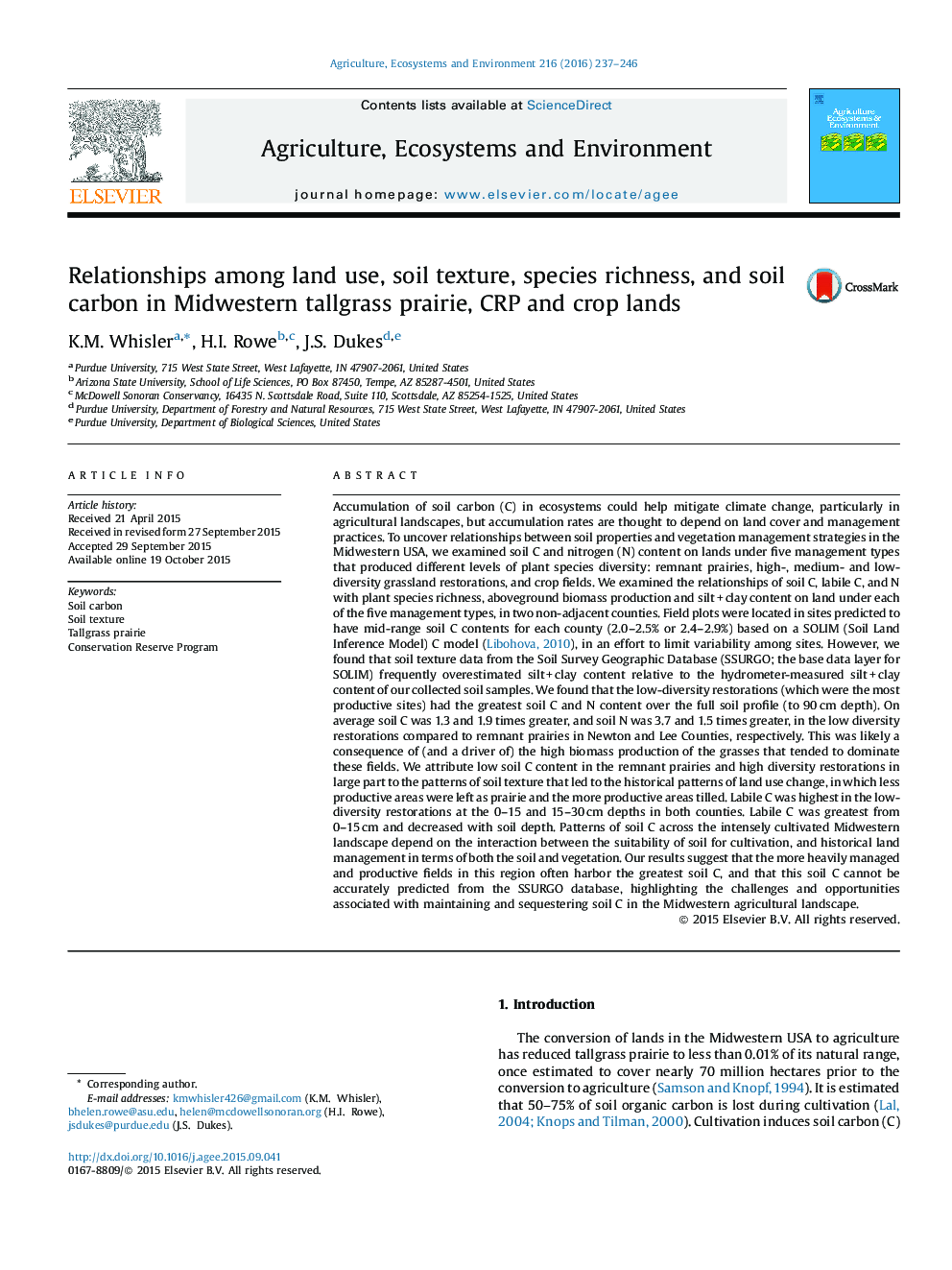| کد مقاله | کد نشریه | سال انتشار | مقاله انگلیسی | نسخه تمام متن |
|---|---|---|---|---|
| 2413645 | 1552036 | 2016 | 10 صفحه PDF | دانلود رایگان |

• Highly managed and productive fields had the greatest soil C.
• Silt + clay content was the strongest predictor of soil carbon and nitrogen.
• Silt + clay content confounded variation contributed by the plant community.
• Soil survey silt + clay values overestimated actual hydrometer measured values.
• Soil survey derived data did not accurately estimate soil C in this study.
Accumulation of soil carbon (C) in ecosystems could help mitigate climate change, particularly in agricultural landscapes, but accumulation rates are thought to depend on land cover and management practices. To uncover relationships between soil properties and vegetation management strategies in the Midwestern USA, we examined soil C and nitrogen (N) content on lands under five management types that produced different levels of plant species diversity: remnant prairies, high-, medium- and low-diversity grassland restorations, and crop fields. We examined the relationships of soil C, labile C, and N with plant species richness, aboveground biomass production and silt + clay content on land under each of the five management types, in two non-adjacent counties. Field plots were located in sites predicted to have mid-range soil C contents for each county (2.0–2.5% or 2.4–2.9%) based on a SOLIM (Soil Land Inference Model) C model (Libohova, 2010), in an effort to limit variability among sites. However, we found that soil texture data from the Soil Survey Geographic Database (SSURGO; the base data layer for SOLIM) frequently overestimated silt + clay content relative to the hydrometer-measured silt + clay content of our collected soil samples. We found that the low-diversity restorations (which were the most productive sites) had the greatest soil C and N content over the full soil profile (to 90 cm depth). On average soil C was 1.3 and 1.9 times greater, and soil N was 3.7 and 1.5 times greater, in the low diversity restorations compared to remnant prairies in Newton and Lee Counties, respectively. This was likely a consequence of (and a driver of) the high biomass production of the grasses that tended to dominate these fields. We attribute low soil C content in the remnant prairies and high diversity restorations in large part to the patterns of soil texture that led to the historical patterns of land use change, in which less productive areas were left as prairie and the more productive areas tilled. Labile C was highest in the low-diversity restorations at the 0–15 and 15–30 cm depths in both counties. Labile C was greatest from 0–15 cm and decreased with soil depth. Patterns of soil C across the intensely cultivated Midwestern landscape depend on the interaction between the suitability of soil for cultivation, and historical land management in terms of both the soil and vegetation. Our results suggest that the more heavily managed and productive fields in this region often harbor the greatest soil C, and that this soil C cannot be accurately predicted from the SSURGO database, highlighting the challenges and opportunities associated with maintaining and sequestering soil C in the Midwestern agricultural landscape.
Journal: Agriculture, Ecosystems & Environment - Volume 216, 15 January 2016, Pages 237–246